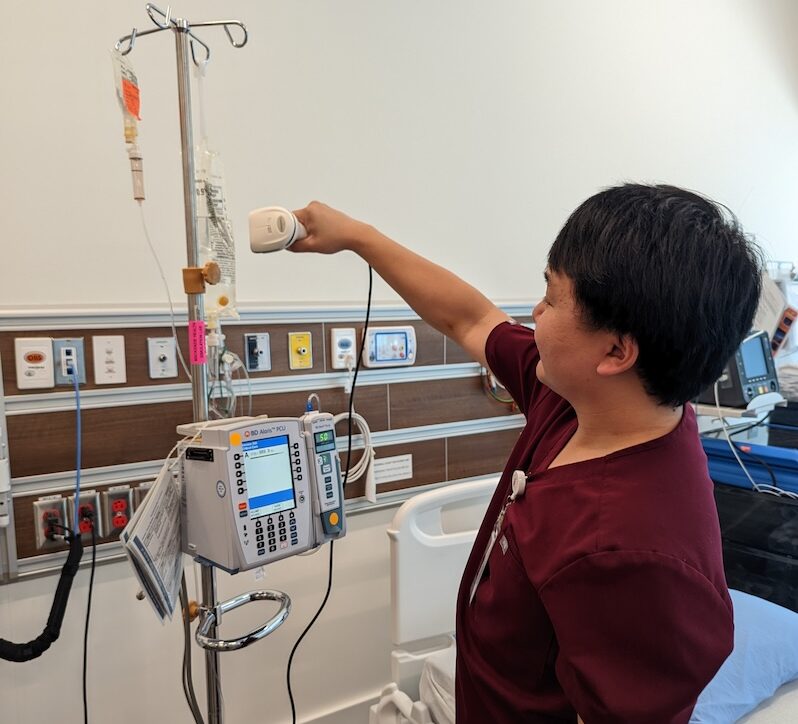IV Pump Safety: Delivering the Right Medication and Dosage

Drip. Drip. Drip.
Simon is lying in a hospital bed after a successful abdominal surgery. Listening to the steady drip of the intravenous (IV) pump, he wonders whether he’s getting the right medication. What’s worse, he wonders, “what if the dose is wrong? What happens then?”
He resigns himself to the fact that he has to put his trust in the health care professionals taking care of him. Surely, the doctor has prescribed the right medication, the pharmacist verified it correctly and the nurse programmed the equipment properly.
And for patients like Simon, this is true at most hospitals, most of the time.
However, as the Enlightenment poet Alexander Pope’s quote goes, “to err is human,” and human error is unfortunately a risk across the health care system when it comes to manually programming an IV pump.
To help address this risk, Mackenzie Health has added an additional level of assurance that patients are getting the right medication at the correct dose, at the rate and time they need it.
In April, the organization became the first health care provider in Canada to launch a technology that allows for the sharing of two-way information between the IV pump and the patient’s electronic medical record (EMR), providing additional safeguards to ensure patients receive the right medication every time.
This new technology, known as BD Alaris™ EMR interoperability, was introduced at both Mackenzie Richmond Hill Hospital and Cortellucci Vaughan Hospital. It replaces the need for health care professionals to manually program pumps while sending infusion safety information back into the Epic EMR. This significantly reduces the risk of administration errors and provides a more accurate infusion record in the EMR.
A study published in the American Journal of Health-System Pharmacy found that interoperability and this type of connectivity between technology, equipment and workflows can result in an 86 per cent reduction in the average number of keystrokes needed to manually program an infusion.
By scanning a patient’s wristband, medication barcode and infusion pump, the care team can connect a patient’s electronic medication order to their IV pump and verify that it will deliver the right medication and dosage to the right patient at the right time.
“Mackenzie Health is committed to continually improving the way we deliver safe, quality care to our patients,” says Mary-Agnes Wilson, Executive Vice President, Chief Operating Officer and Chief Nursing Executive at Mackenzie Health. “We are on a journey to zero harm, embracing the philosophy that even one error is one too many. This new, connected IV pump technology helps enable the safe administration of medication and ultimately better outcomes for those who trust us with their care.”
Making investments like this is part of Mackenzie Health’s commitment to the principles of High Reliability Organizing (HRO) – principles used in industries like aviation and nuclear where the stakes are high and errors can lead to catastrophic outcomes. Mackenzie Health is committed to providing health care workers with the tools, processes and skills they need to reduce errors and prevent events that can cause harm to patients and employees, ensuring every patient receives reliable and consistent care, every time.
“In 2017 when purchasing additional smart infusion pumps in advance of opening our second hospital, we made the decision to continue investing in a single platform that would allow us to leverage additional interoperability features in the future,” said Purvi Desai, Vice President, Digital Health and Chief Information Officer. “Enabling these additional features that allow for two-way information flow between IV pumps and our electronic medical record creates efficiency, adds safeguards to the process and ultimately allows our clinicians to do what they do best – spend more time taking care of their patients.”
By Christina Cindric
By Christina Cindric, Senior Communications Consultant and Public Affairs Lead, Mackenzie Health








